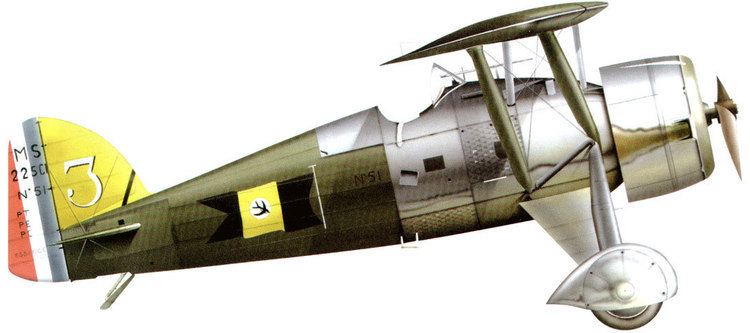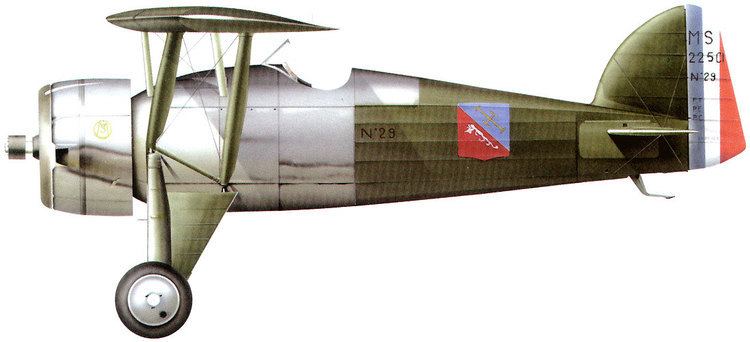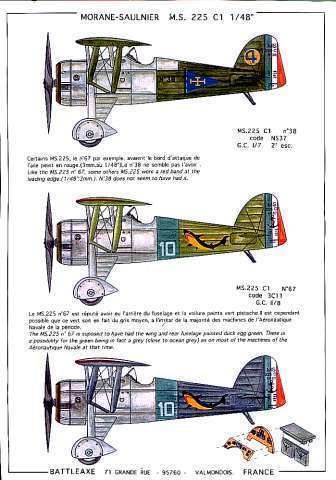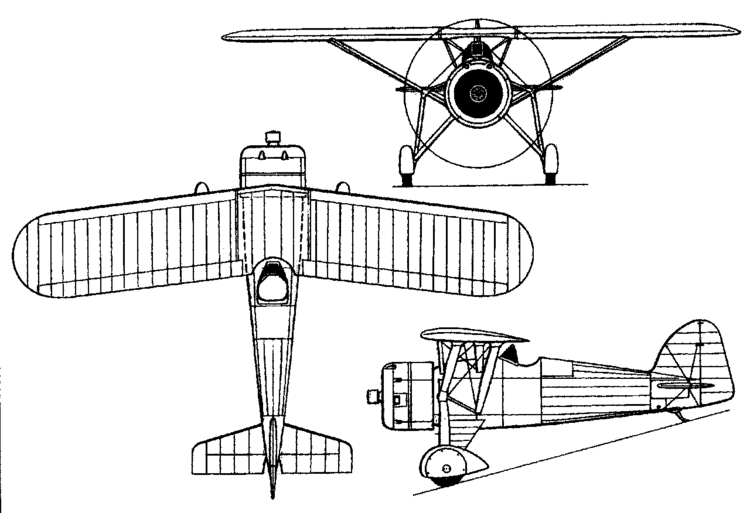Top speed 335 km/h Length 7.25 m | Wingspan 11 m | |
 | ||
Indoor freeflight morane saulnier m s 225
The Morane-Saulnier M.S.225 was a French fighter aircraft of the 1930s. It was produced in limited quantities to be used as a transitional aircraft between the last of the biplanes and the first monoplane fighters.
Contents
Design and development

The M.S.225 was a parasol monoplane, with a wide fixed landing gear, and powered by a Gnome-Rhône 9Krsd radial engine. Having a circular fuselage the M.S.225 was much more robust than its immediate predecessor, the M.S.224.

Created as a stop-gap before the introduction of more advanced aircraft still under development, the Morane-Saulnier M.S.225 was first shown in the form of a model at the Paris Air Show of 1932. After successful flight tests of the prototype, series production started at once.

Classified in the category C.1 (single-seat fighter), 75 aircraft were produced. A total of 53 aircraft were delivered to the Air Force in November 1933. The Aéronavale received the first of the 16 aircraft it had ordered in February 1934. Three were also sold to China.
Operational history

The M.S.225s of the Armée de l'Air served in the 7e Escadre de Chasse (7th Fighter Wing) at Dijon, and in 2 escadrilles of the 42e Escadre (42nd Wing), based at Rheims. They were withdrawn from front-line service between 1936 and 1937. The aircraft also flew with the Aéronavale l'Escadrille 3C1, established in Marignane, this formation later transferring to the Air Force at the beginning of 1936, where it became Le Groupe de Chasse II/8.
The Air Force Aerobatic Squadron based at Étampes used five modified M.S.225's, with a larger vertical stabilizer, while the last unit of the Air Force to operate this aircraft was the flying school based at Salon-de-Provence.
At the outbreak of World War II, only 20 M.S.225s were still in flying condition, the majority of them being scrapped in mid-1940.
Variants
Operators
Specifications (M.S.225)
Data from The Complete Book of Fighters
General characteristics
Performance
Armament
